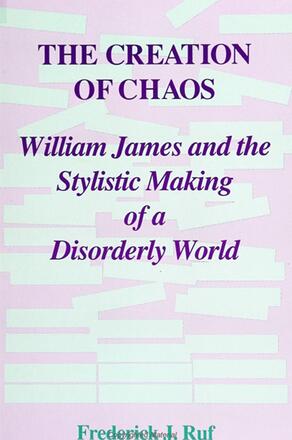
The Creation of Chaos
William James and the Stylistic Making of a Disorderly World
Alternative formats available from:
Description
This is the first book-length study of William James' style, arguing that the manner in which James writes The Principles of Psychology and The Varieties of Religious Experience serves to construct a chaotic world for his readers.
The book examines the uses of chaos in western literature and philosophy and reaches two conclusions: that chaos may be "utter confusion and disorder," but, paradoxically, that disorder is communicated through some particular order — in Joyce's term, all chaos is "chaosmos. " Secondly, what is essential about chaos is what it does: nothing is inherently chaotic, rather chaos is used to contrast with or challenge something that is more structured or formed. Finally, the author presents an examination of the religious function of James' chaotic worldview as a disorientation which orients.
Frederick J. Ruf is Assistant Professor in the Theology Department at Georgetown University.
Reviews
"This book manages to be original in two ways at once: it is both a rhetorical reading of James (much needed and well done) and a reflection on chaos as a religious symbol. The latter aspect draws from a variety of sources which makes for fascinating reading. This double focus allows the author to discuss James' style from a specific perspective, namely chaos, which gives the book unity and enables much insight. This double perspective also allows for a double reading of the two texts which this book examines, The Principles and The Varieties. In sum, James is located not in any specific tradition (say, American pragmatism) but rather is put into conversation with a whole range of people who wrote about chaos. " — Stephen Webb, Wabash College